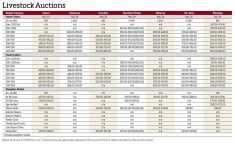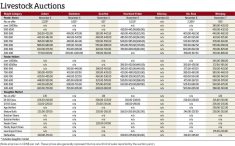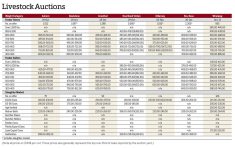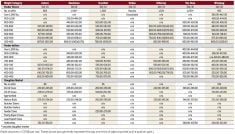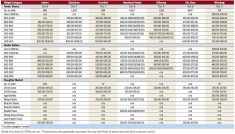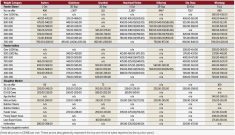The spring cattle rally may be finally coming to an end. Bids for most classes at stockyards across the province were the same or even slightly lower in some cases during the week ended May 12.
Heavier-weight animals were steady to lower, with heifers (800-900 lbs.) down $3-$5. Steers (400-500 lbs.) were also down roughly $5.
One market watcher says the downturn started late last week. “We started to see front-end June cattle crack and that has continued this week in a significant way,” said Anne Wasko, a market analyst at Cattle Trends and Gateway Livestock.
Read Also
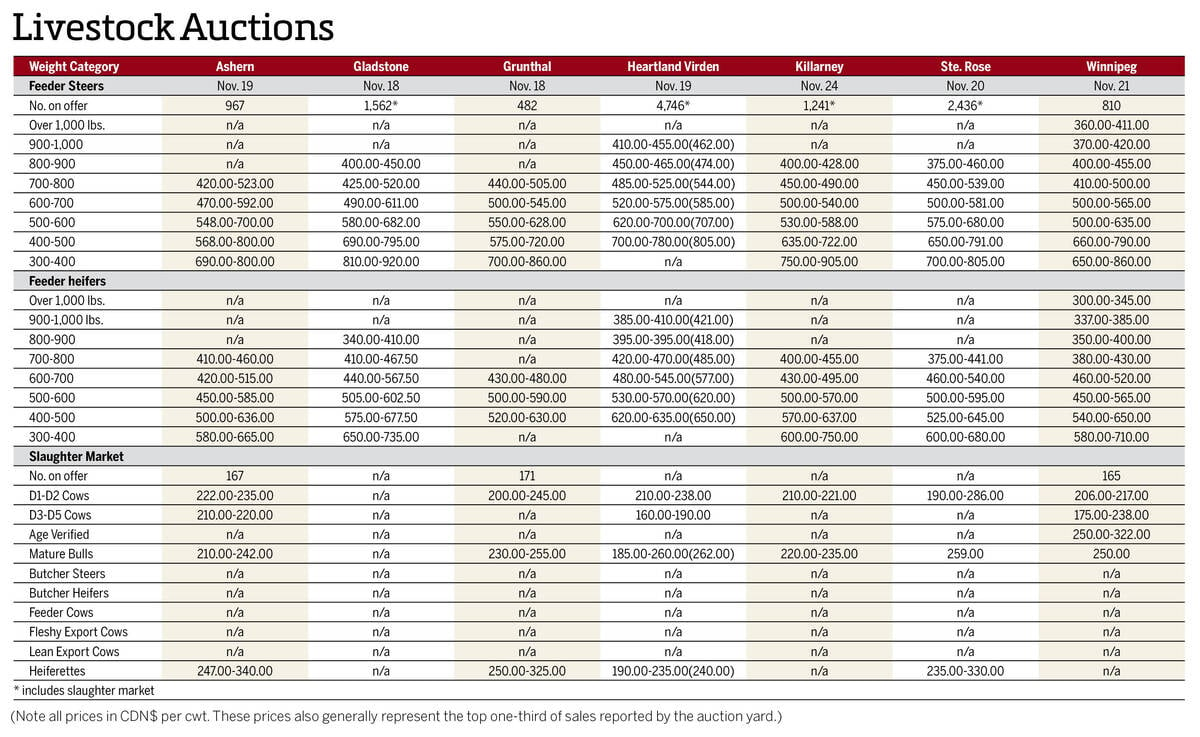
Manitoba cattle prices – Nov. 24
Cattle prices from Manitoba’s major auction marts for the week of Nov. 18-24.
On the Chicago Mercantile Exchange, cattle futures declined roughly nine per cent compared to the week previous.
Cash prices were also down, although some reports suggested this could help packer margins in the coming week.
The market was really just correcting itself after a bullish run, Wasko said. “Certainly the amount of the rally that headed into the spring of 2017 was more than most of us were expecting.”
Larger cattle supplies in the U.S. also made the timing of the rally unusual, she said.
“Packers were aggressively processing cattle and pulling them forward while carcass weights came down, so the overall tonnage had a positive impact on the market.”
Reducing carcass weight by 20-40 lbs. over a year ago has had a significant impact on the market, Wasko added. “This has to be a key driver.”
Looking ahead, she said, the market will turn even lower once beef sales for Father’s Day are over.
“The market typically eases off as we get into the dog days of summer,” she said.
Fortunately, feed and water don’t appear to be problems for any cattle-bearing regions of the province, with most dugouts full while haylands are said to be in good condition.
Volumes were lower during the week ended May 12, with just 5,500 animals making their way through the ring, compared to over 7,500 last week.
However, there is some optimism a newly signed agreement in the U.S. could provide a boost for the Canadian market.
Late last week China agreed to start importing U.S. beef, in return for the U.S. allowing cooked Chinese poultry.
The news proved to be a major talking point for ranchers and brokers in the U.S., while investors greeted the news with optimism. China is the fastest beef-growing market in the world.
Still, some pundits cautioned the news might not translate into huge volumes of meat headed overseas and the futures market could be indifferent over the long term.
The development also came on the same day Manitoba Beef Producers called on the Canadian government to do more to open up international borders.





